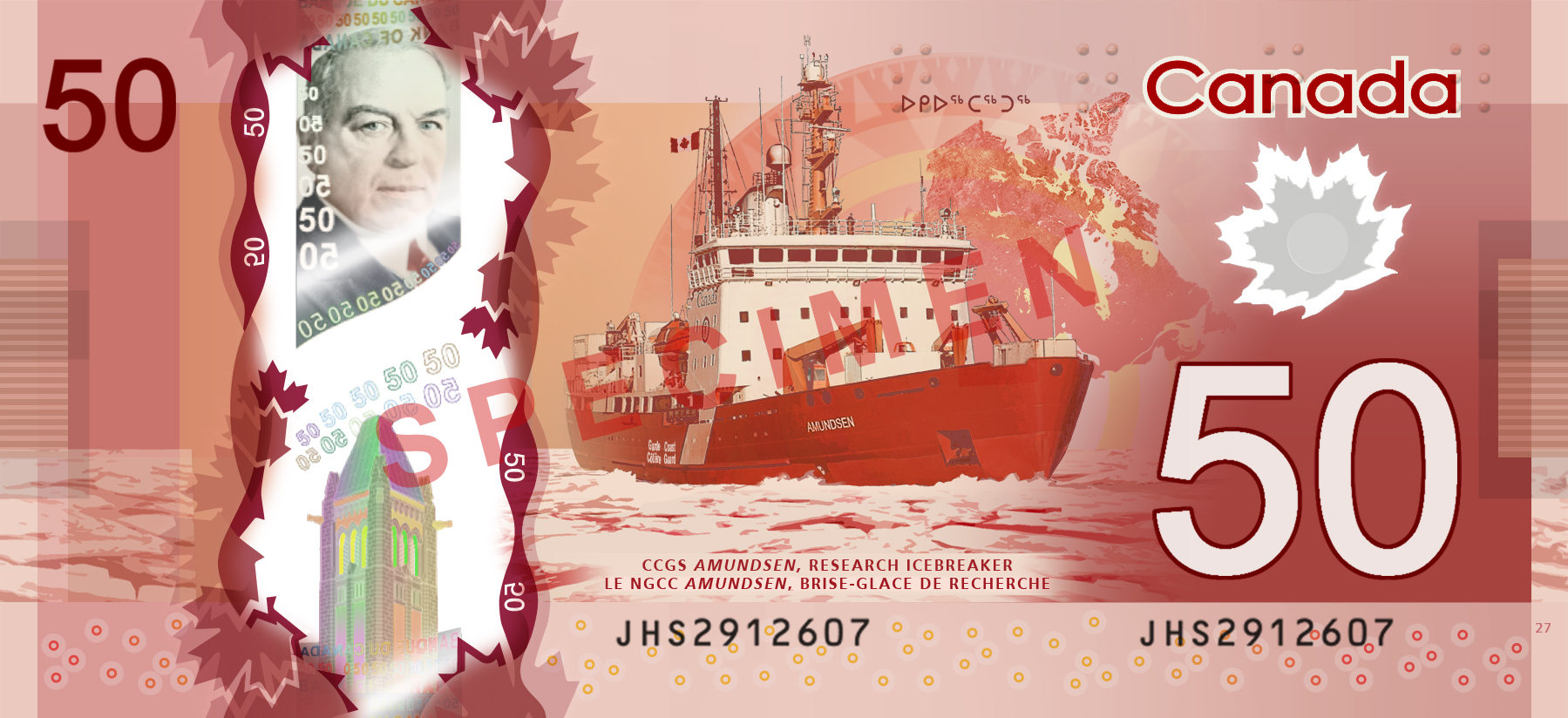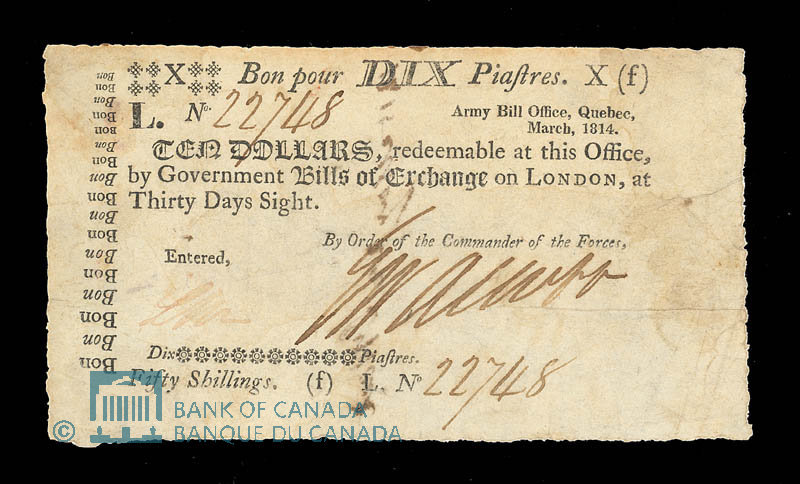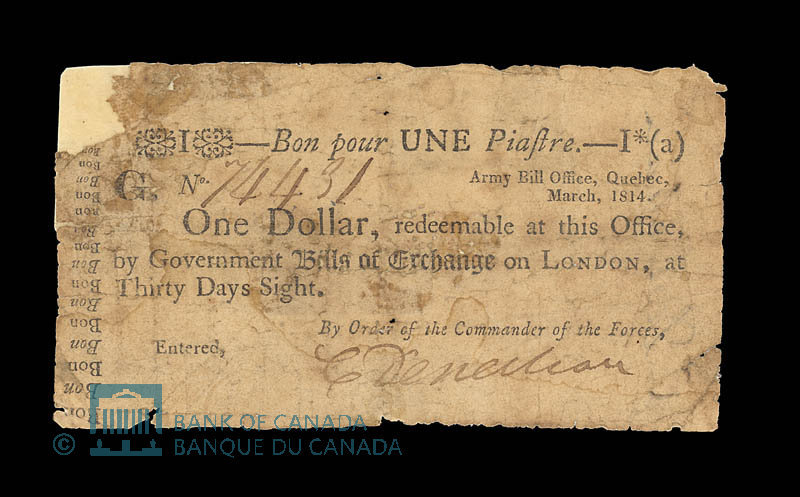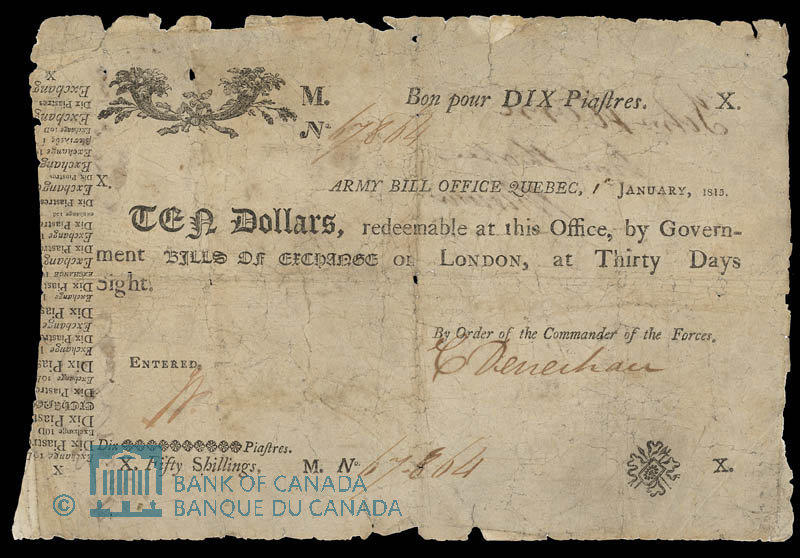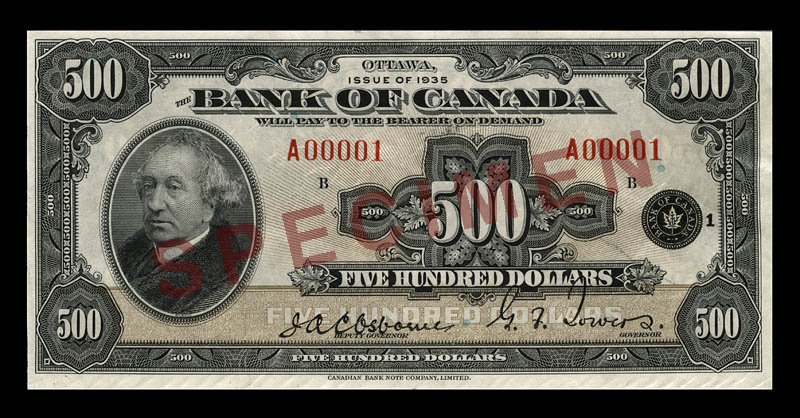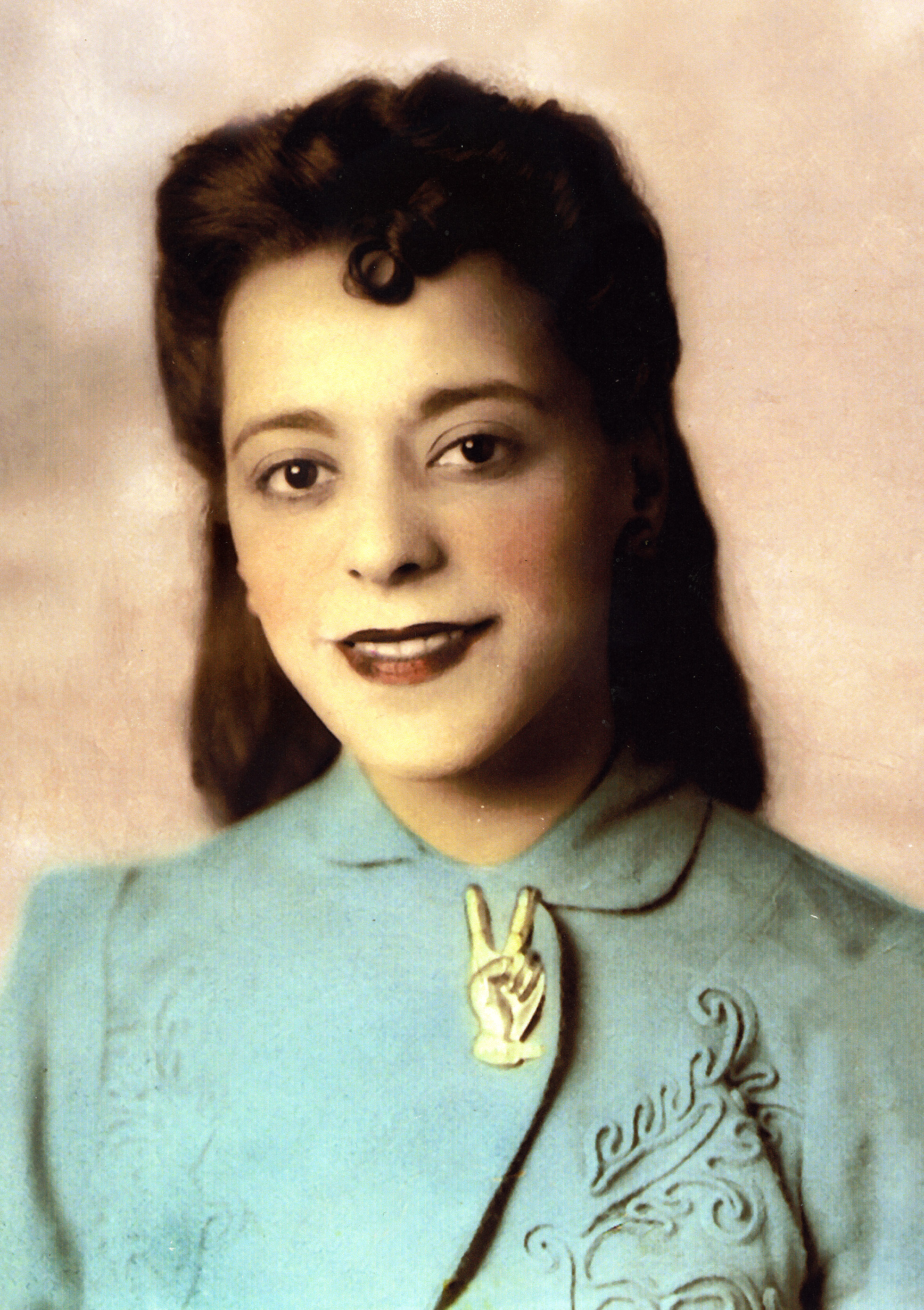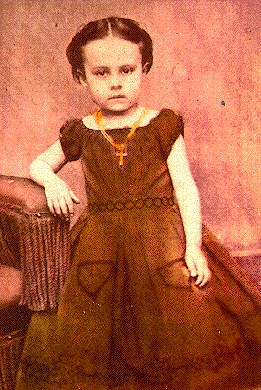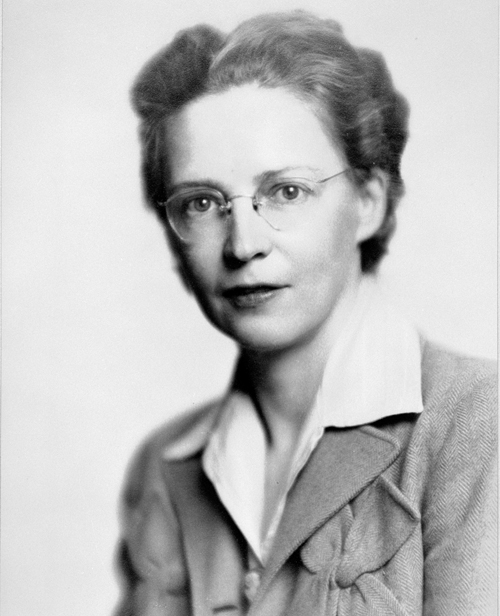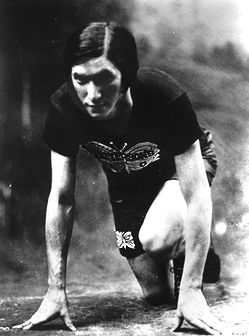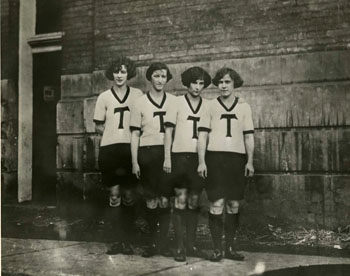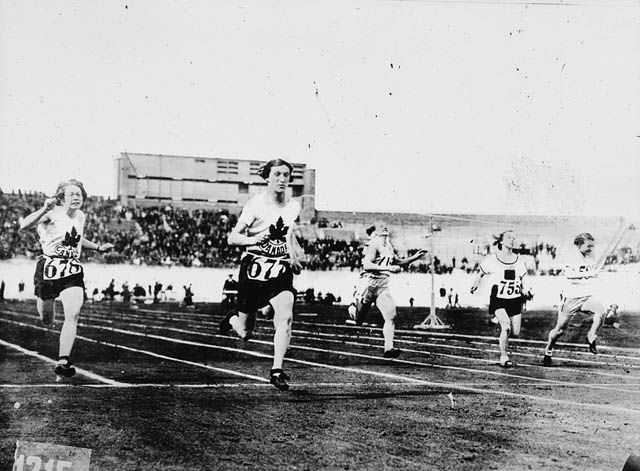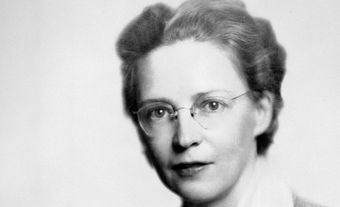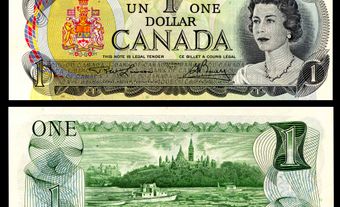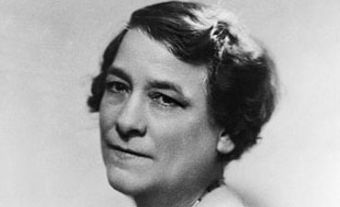Though Queen Elizabeth II has appeared on the $20 bill since she was eight years old, identifiable Canadian women have only appeared on a Canadian banknote once. In 2004, the statue of the Famous Five from Parliament Hill and Olympic Plaza in Calgary, and the medal for the Thérèse Casgrain Volunteer Award were featured on the back of the $50 note. They were the first Canadian women to appear on our currency. However, in 2011, they were replaced by an icebreaker named for a man (see Roald Amundsen). The new bill was part of a series of notes meant to highlight technical innovation and achievement, but the change sparked controversy. Other than the image of a nameless female scientist on the $100 note issued in 2011, and two female Canadian Forces officers and a young girl on the $10 bill issued in 2001 , Canadian women were absent from Canadian bills.
On 8 March 2016, International Women’s Day, the Bank of Canada launched a public consultation to choose an iconic Canadian woman who would be featured on a banknote, released in the next series of bills in 2018. More than 26,000 submissions poured in. Of those, 461 names met the qualifying criteria, and the list was pared down to a long list of 12 and finally a short list of five. The final selection will be announced on 8 December 2016.
But how did we get here?
Introduction
"Who and what is celebrated on our banknotes matters, as it reflects what we consider important in our culture and history and who we consider worthy of honouring for achievement. Women are not absent from the list of notable worthies in Canada, just notably absent or under-represented in many of the images that surround us and which contribute to our view of the world and our potential role in it." — Merna Forster
In 2013, historian Merna Forster, the author of 100 Canadian Heroines: Famous and Forgotten Faces (2004), kicked off a campaign to represent women on banknotes. She started an online petition, directed at the Bank of Canada, which received over 73,000 signatures. She wrote to every sitting Member of Parliament, and she gifted her books to each female director of the Bank of Canada. “I couldn’t let it go,” she told the Toronto Star. “It’s an important, symbolic thing.”
Forster kept the campaign rolling for almost three years, during which time a similar campaign in the United Kingdom brought author Jane Austen to the £10 note.
In March 2016, Liberal Minister of Finance Bill Morneau announced that an iconic Canadian woman would be featured in the next series of bills.
Brief History of Banknotes in Canada
The first paper money used in New France was actually playing cards. Specially cut and signed by the governor, they were issued in 1685 to supplement the French and Spanish silver coins in use at the time (see Playing-Card Money).
But after the Conquest (1759–60), British pounds, shillings and pence became official money in Canada; however, they never did become dominant. Instead, a hodgepodge of money circulated, including Nova Scotia money, American dollars, Spanish dollars, and "army bills." Used by the British forces to buy supplies in the War of 1812, the use of army bills accustomed Canadians to reliable paper money.
During the mid-19th century, the government began to issue its own money to circulate alongside bills printed by the Bank of Montreal and other banks. Canada's bills began circulating with the $1 in 1858, followed by the $2, $50, $500 and $1,000 notes in 1887.
Prime Ministers on Banknotes

The earliest banknote with a Canadian prime minister on its face — what we’re now used to seeing — was a $5,000 bill from 1896 depicting Sir John A. MacDonald. However, these notes were only for bank use and weren’t available to the public. Canadian politicians were rarely seen on our paper money until the Bank of Canada (the country’s central bank) was founded in 1934. The first series of notes the bank released the following year depicted Sir John A. Macdonald on the $500 bill and Sir Wilfrid Laurier on the $1,000 bill. However, notes in broader circulation featured members of the royal family , including an eight-year-old Princess Elizabeth on the $20 (see Queen Elizabeth II ).
It wasn’t until the 1969–79 series of banknotes that former prime ministers were seen on the majority of bills. According to the Bank of Canada Museum, Minister of Finance Edgar Benson asked that the notes feature Canadian prime ministers, “to reflect Canada’s burgeoning national identity.”
Laurier ($5), Macdonald ($10), William Lyon Mackenzie King ($50) and Sir Robert Borden ($100) were chosen because they had held office for long periods and been deceased for some time. It can also be argued that each prime minister depicted on banknotes made a significant contribution to Canada.
But enough talk about the men…
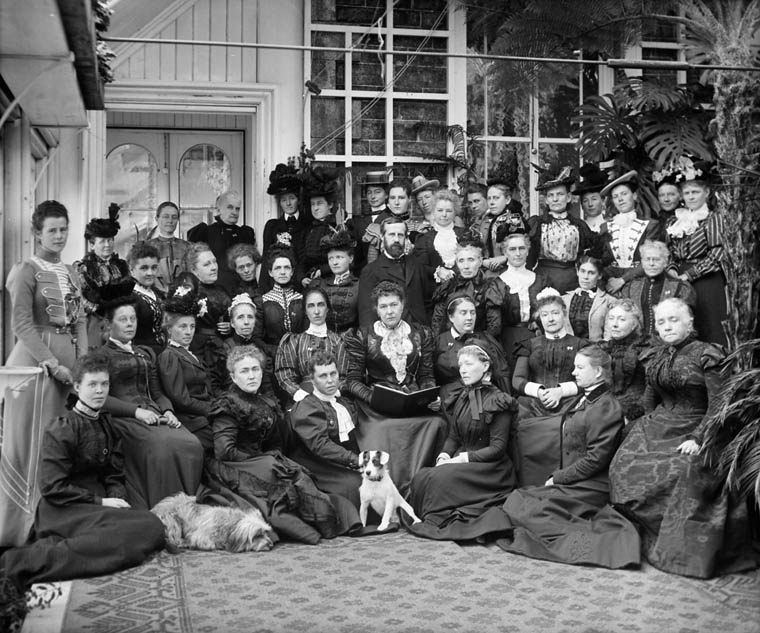
On 8 March 2016, International Women’s Day, the Bank of Canada launched a public consultation to choose an iconic Canadian woman who would be featured on a banknote, released in the next series of bills in 2018.
More than 26,000 submissions poured in between 8 March and 15 April 2016. Of those, 461 names met the qualifying criteria, and the list was pared down to 12 by an independent advisory council.
Criteria stipulated that:
- the nominee can be any Canadian woman (by birth or naturalization) who has demonstrated outstanding leadership, achievement or distinction in any field, benefiting the people of Canada, or in the service of Canada;
- the nominee must not be a fictional character;
- the nominee must have been deceased for at least 25 years (before 15 April 1991).
The Final Five

The advisory council then incorporated feedback from a public opinion survey and a panel of historians to produce a final short list of five nominees, which was announced on 24 November 2016.
The final five nominees were:
Viola Desmond Chosen
In accordance with the Bank of Canada Act, it fell to the Minister of Finance, Bill Morneau, to select one of the five women from the short list. On 8 December 2016, Morneau, the Governor of the Bank of Canada and the Minister of Status of Women announced that civil rights icon Viola Desmond would appear on the new banknote.
The $10 bill featuring Desmond was released on 19 November 2018. It was Canada’s first vertical banknote (see Money in Canada). It also features a map of the North End of Halifax, where Desmond lived and worked, and an excerpt from the Canadian Charter of Rights and Freedoms: “Every individual is equal before and under the law and has the right to the equal protection and equal benefit of the law without discrimination.” The Canadian Museum of Human Rights appears on the back of the bill.
In April 2019, the bill won the International Bank Note Society’s Bank Note of the Year Award for 2018.


 Share on Facebook
Share on Facebook Share on X
Share on X Share by Email
Share by Email Share on Google Classroom
Share on Google Classroom

